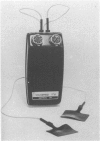Abstract
Electrical stimulation can relieve some severe and otherwise persisting pains. At its best it can be associated with either a gradual reduction in the pain or an increased ability by the patient to control his suffering. It seems particularly appropriate for use in the field of benign persistent pain. Equipment design and materials, particularly for implantable circuits, are not perfect. Movement towards percutaneous implantation, obviating the need for open operation, seems progressively more popular. Any unit or group using this form of treatment, must be prepared to provide major technical facilities, both in the form of people and equipment in order to cater for the many purely technical problems that occur. A great deal of knowledge both neurophysiological and neurochemical seems to be accruing from the clinical use of electrical stimulation. We would do well to take advantage of this opportunity, in the hope that it might lead us to a better understanding of the functioning of the nervous system. This consideration remarkably parallels an observation made by John Hunter in his presentation to the Royal Society in 1773 (13) which anticipated the realisation of the part played by electricity in the function of nerves. Following his description of the extraordinary innervation of the electric organs of the Torpedo fish, he wrote: 'How far this may be connected with the power of the nerves in general, or how far it may lead to an explanation of their operations, time and future discoveries alone can fully determine.'
Full text
PDF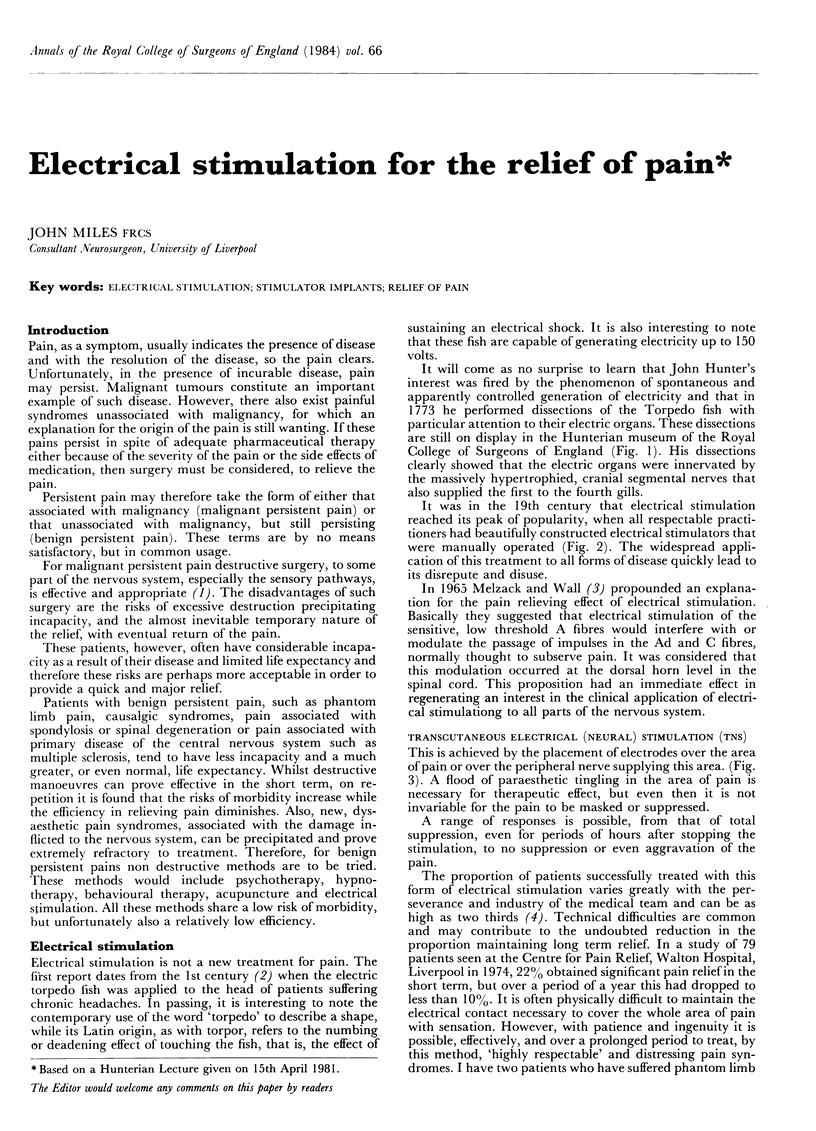
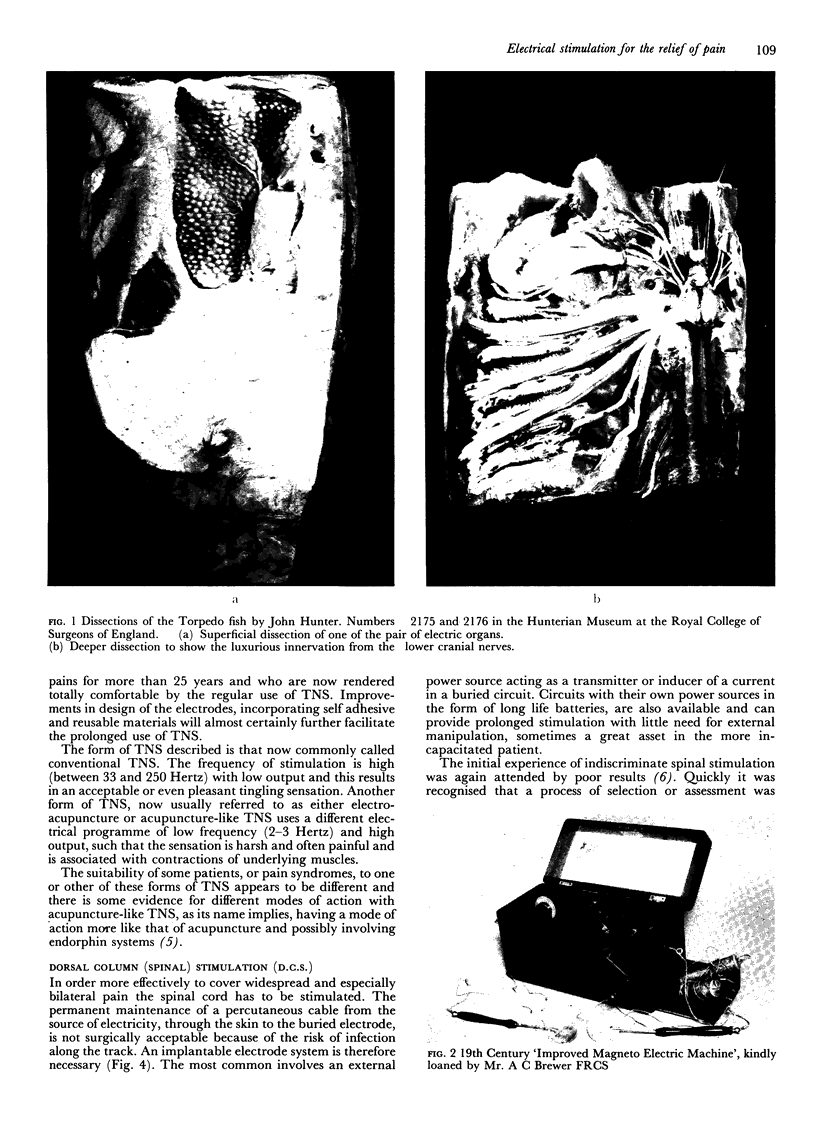
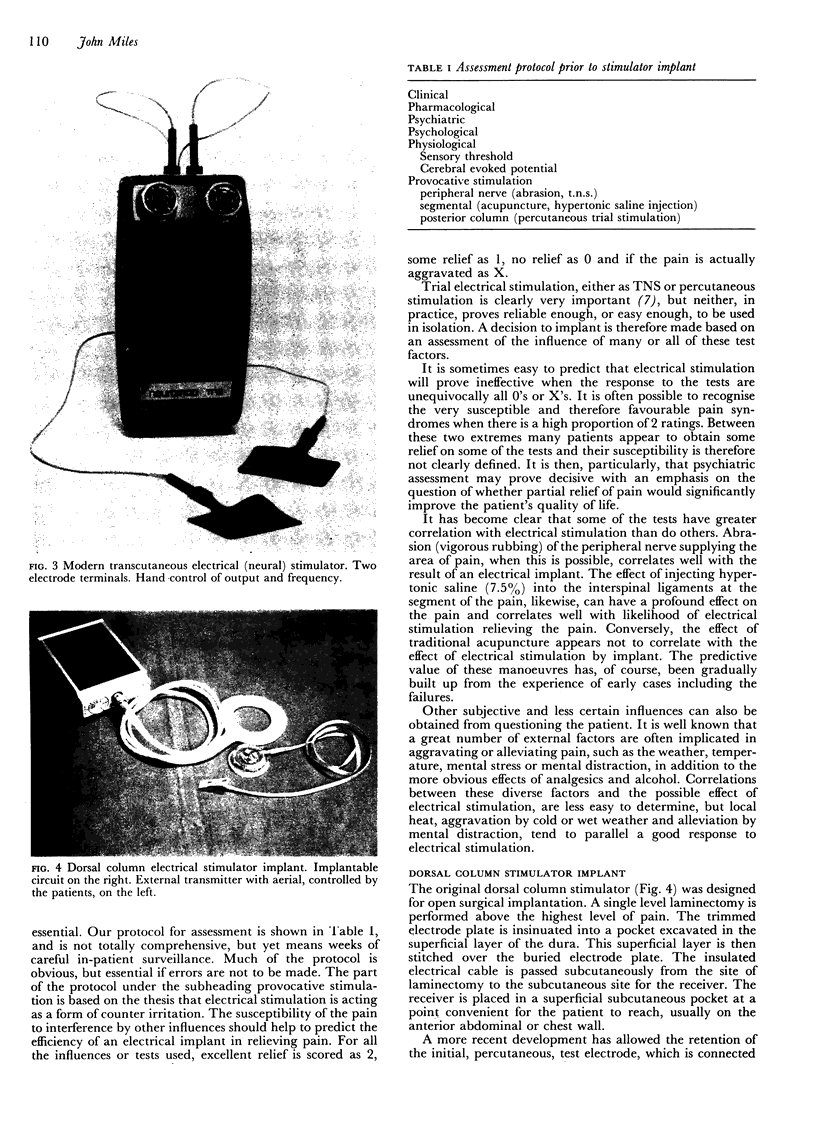
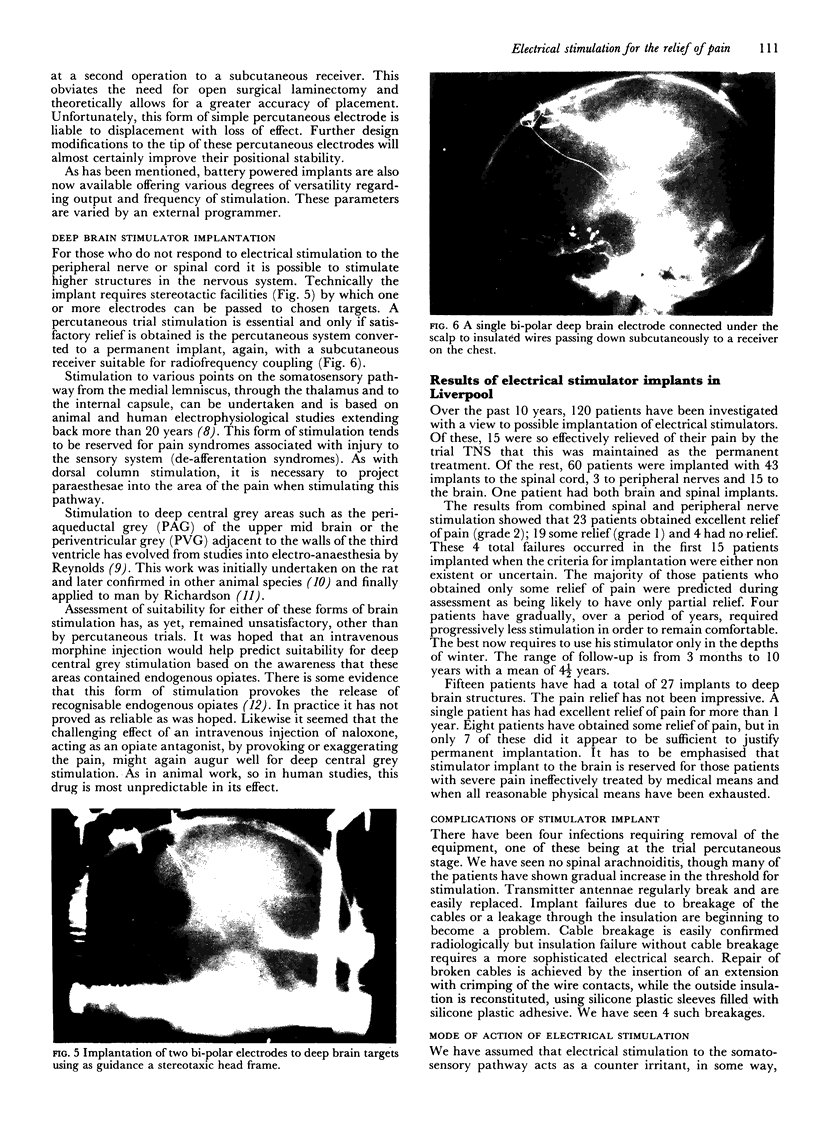
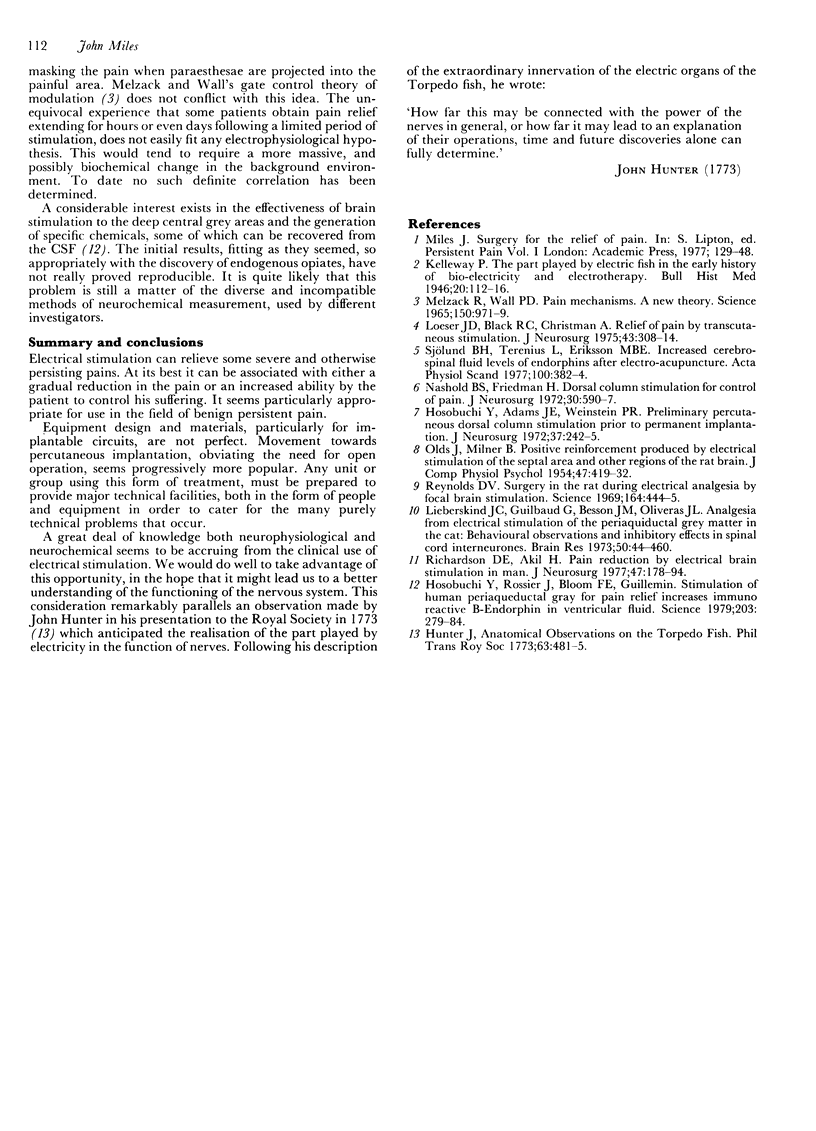
Images in this article
Selected References
These references are in PubMed. This may not be the complete list of references from this article.
- Hosobuchi Y., Adams J. E., Weinstein P. R. Preliminary percutaneous dorsal column stimulation prior to permanent implantation. Technical note. J Neurosurg. 1972 Aug;37(2):242–245. doi: 10.3171/jns.1972.37.2.0242. [DOI] [PubMed] [Google Scholar]
- Hosobuchi Y., Rossier J., Bloom F. E., Guillemin R. Stimulation of human periaqueductal gray for pain relief increases immunoreactive beta-endorphin in ventricular fluid. Science. 1979 Jan 19;203(4377):279–281. doi: 10.1126/science.83674. [DOI] [PubMed] [Google Scholar]
- Loeser J. D., Black R. G., Christman A. Relief of pain by transcutaneous stimulation. J Neurosurg. 1975 Mar;42(3):308–314. doi: 10.3171/jns.1975.42.3.0308. [DOI] [PubMed] [Google Scholar]
- Melzack R., Wall P. D. Pain mechanisms: a new theory. Science. 1965 Nov 19;150(3699):971–979. doi: 10.1126/science.150.3699.971. [DOI] [PubMed] [Google Scholar]
- Nashold B. S., Jr, Friedman H. Dorsal column stimulation for control of pain. Preliminary report on 30 patients. J Neurosurg. 1972 May;36(5):590–597. doi: 10.3171/jns.1972.36.5.0590. [DOI] [PubMed] [Google Scholar]
- OLDS J., MILNER P. Positive reinforcement produced by electrical stimulation of septal area and other regions of rat brain. J Comp Physiol Psychol. 1954 Dec;47(6):419–427. doi: 10.1037/h0058775. [DOI] [PubMed] [Google Scholar]
- Reynolds D. V. Surgery in the rat during electrical analgesia induced by focal brain stimulation. Science. 1969 Apr 25;164(3878):444–445. doi: 10.1126/science.164.3878.444. [DOI] [PubMed] [Google Scholar]
- Richardson D. E., Akil H. Pain reduction by electrical brain stimulation in man. Part 1: Acute administration in periaqueductal and periventricular sites. J Neurosurg. 1977 Aug;47(2):178–183. doi: 10.3171/jns.1977.47.2.0178. [DOI] [PubMed] [Google Scholar]
- Sjölund B., Terenius L., Eriksson M. Increased cerebrospinal fluid levels of endorphins after electro-acupuncture. Acta Physiol Scand. 1977 Jul;100(3):382–384. doi: 10.1111/j.1748-1716.1977.tb05964.x. [DOI] [PubMed] [Google Scholar]





